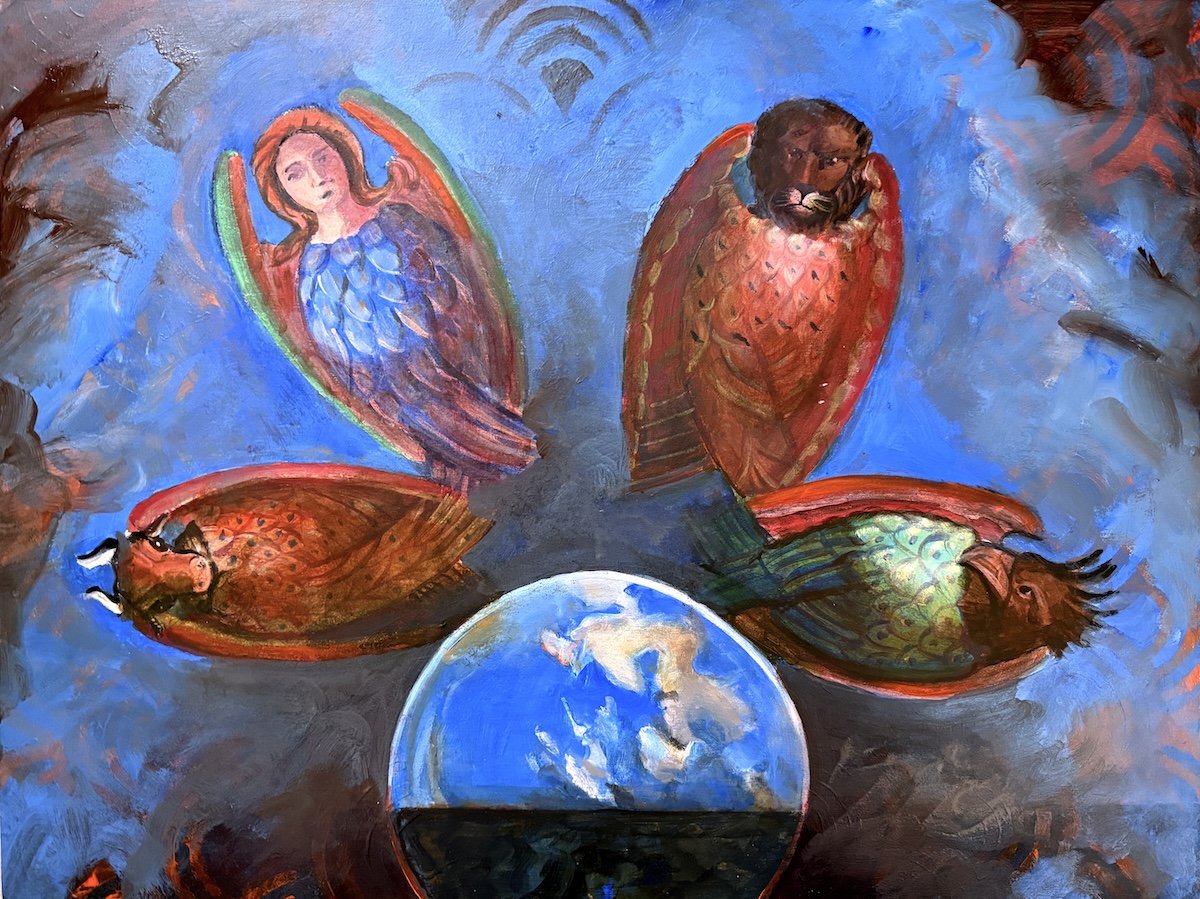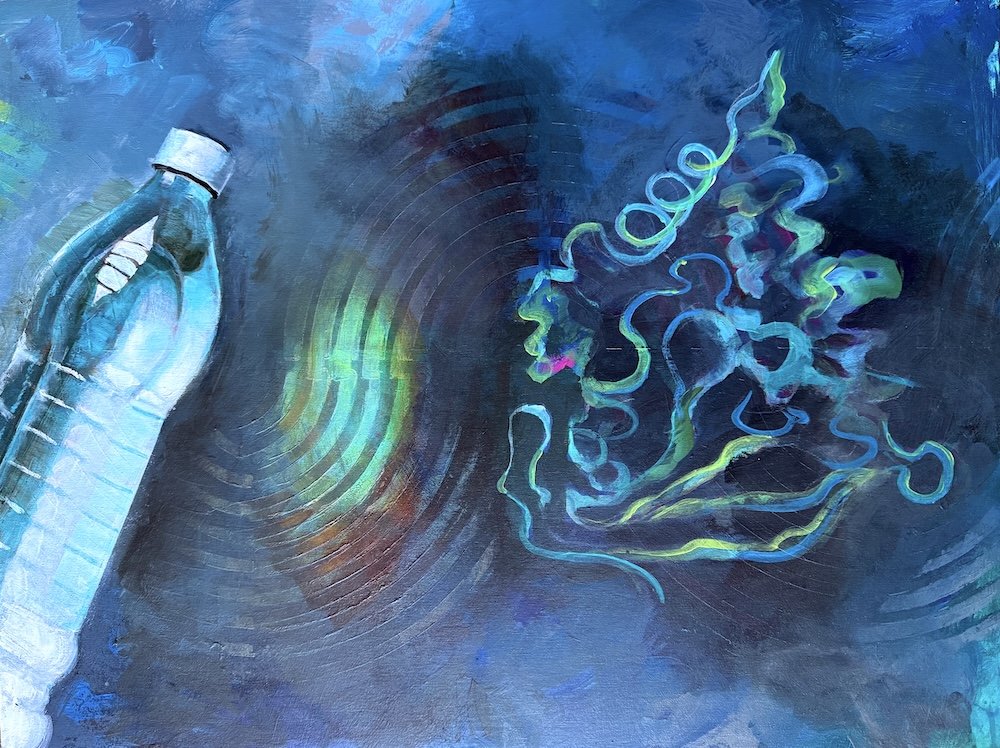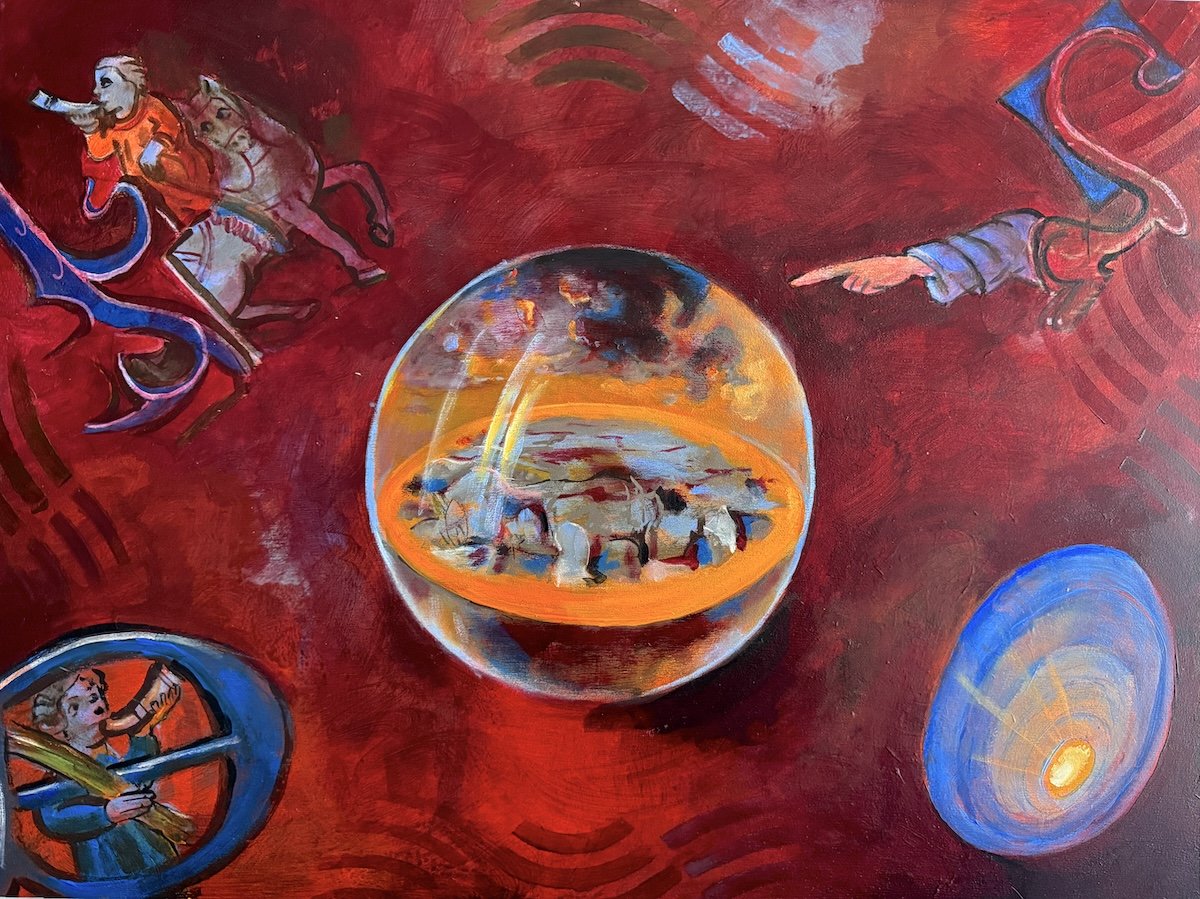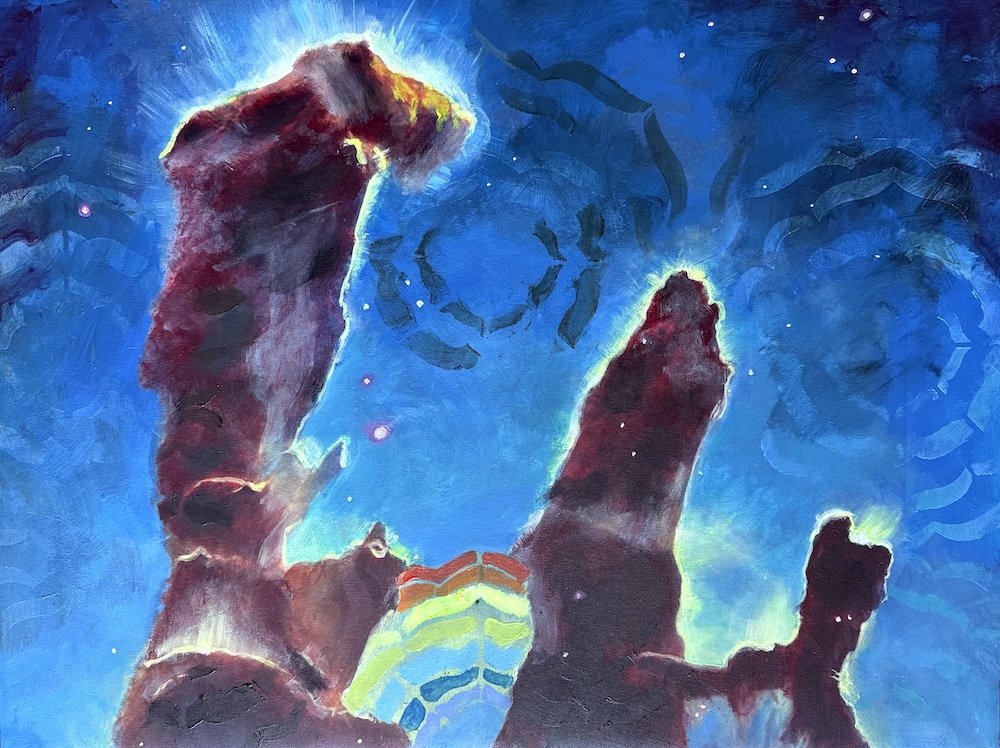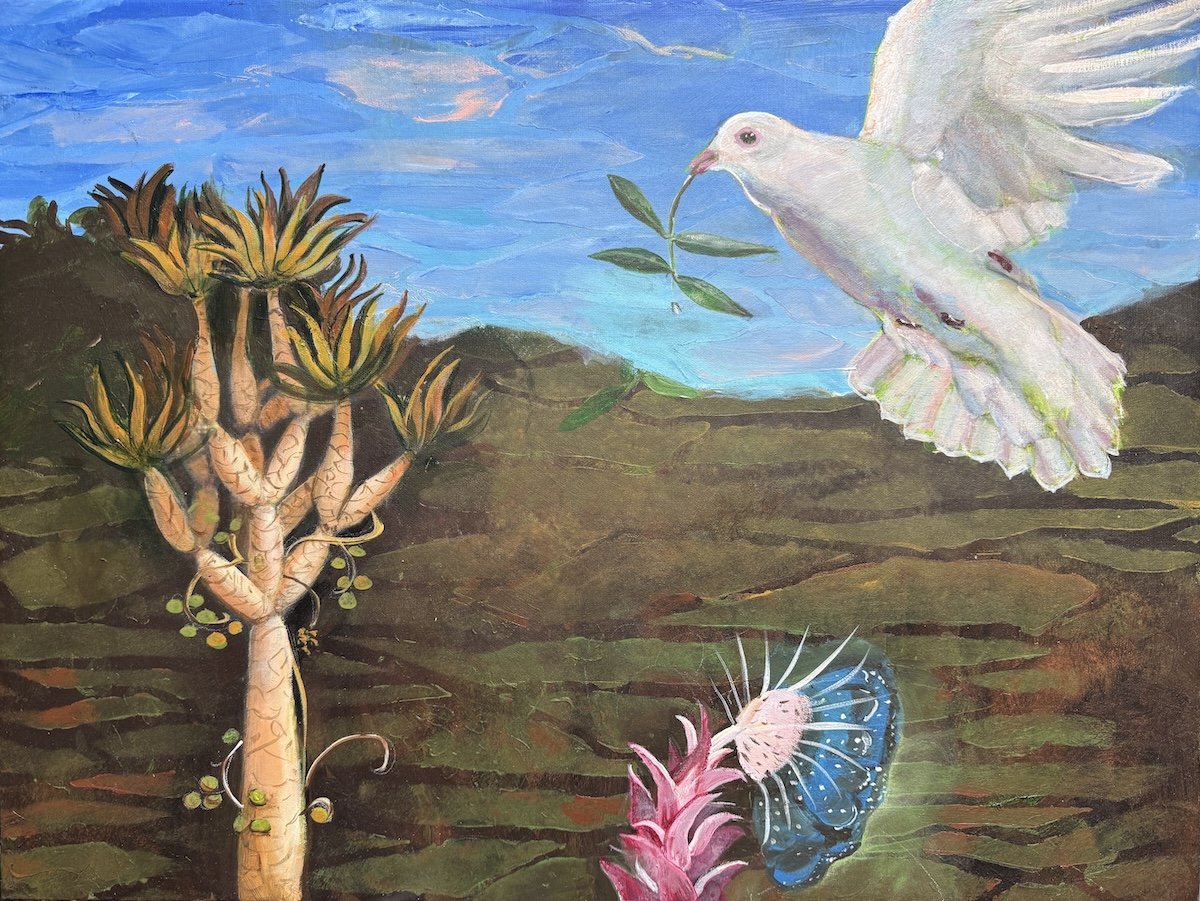NOAH: A Future Hope
The NOAH exhibition is an artistic response to the escalating environmental and spiritual challenges that we currently face around the globe. It is a strategic and timely contemporary art exhibition that reminds us through the ancient epic story of Noah, which is shared by Muslims, Christians and Jews, that we must come together and be proactive to constructively address the global environmental issues that affect us all.
Noah/Noach/Nuh is a spiritual figure of distinct significance within the three primary monotheistic faith traditions, referred to as the Abrahamic faiths – Judaism, Christianity and Islam; all three originating in the Middle East. In all three faiths, the story of Noah serves as a reminder of humanity’s role as a protector, steward and caretaker of Creation. The contemporary relevance of the Noah story lives in its capacity to inspire individuals and societies to become active participants in the stewardship of the earth. We are reminded that all are passengers on the same vessel in need of protection, care and the collective commitment to secure a sustainable future for generations to come. This epic story is also a message of hope for a harmonious coexistence between humans and the environment.
Featuring three contemporary artists: HADY BORAEY (Muslim), BRIAN WHELAN (Christian), YONA VERWER (Jewish)
Curator: Paul G. Chandler
Traveling exhibition 2025-2028: USA, Europe, Egypt.
Click on the thumbnails to see the full images
Ezekiel's Vision, 18 x 24 inches, Acrylic on Wood, 2025
The Gryphon's Warning, 18 x 24 inches, Acrylic on Wood, 2025
Plastic Eating Enzyme, 18 x 24 inches, Acrylic on Wood, 2025
Care for all Species, 18 x 24 inches, Acrylic on Wood, 2025
The World Rests on Three Pillars, 18 x 24 inches, Acrylic on Canvas, 2025
Fish in Plastic, 18 x 24 inches, Acrylic on Canvas, 2025
Dragon Tree, 18 x 24 inches, Acrylic on Canvas, 2025
A New Beginning, 48 x 36 inches, Acrylic on Canvas, 2025
1. Ezekiel’s Vision
In the prophet Ezekiel’s vision, four living creatures—a lion, an ox, an eagle, and a human—surround the divine throne. In Kabbalistic tradition, these beings uphold the very structure of the firmament. This image serves as a metaphor for transformation, illustrating how periods of upheaval can also be moments of revelation and growth. The four creatures represent the integration of various strengths and perspectives, underscoring the importance of inclusivity and collaboration. In a time of division and polarization, Ezekiel’s vision offers a compelling reminder of the potential found in unity and mutual understanding.
2. The Gryphon’s Warning
The mythical gryphon of medieval legend embodied power and strength in battle. Here, it attacks humanity, carrying a torn tree branch—an ominous sign of the destruction to come—as it collides with the knight. The eternal balance of opposing forces, inspired by Dutch medieval images.
3. Plastic Eating Enzyme
Plastic pollution is one of the most urgent environmental challenges of our time. Because most plastics don’t decompose, they are accumulating in our oceans, threatening marine life, human health, and entire ecosystems. Finding solutions is crucial. Scientists have developed an enzyme variant capable of breaking down plastics that would normally take centuries to degrade—in just hours or days.
4. Care for all Species
Humanity has a responsibility to protect all life and ecosystems. This painting draws inspiration from the medieval Book of Maastricht, weaving its imagery into a powerful message. On the left, figures representing humanity blow a shofar—ram’s horn—sounding a call to action. In Jewish tradition, the shofar is linked to the Days of Repentance, urging reflection and renewal. To the right, representations of the Creator point toward the Earth, serving as a reminder of our sacred duty to safeguard the planet.
5. The World Rests on Three Pillars
According to the Mishna (rabbinic literature), the world is upheld by three fundamental principles: Torah (wisdom), spirituality, and acts of kindness—all essential for its existence. This painting draws inspiration from Pillars of Creation, a renowned photograph captured by the Hubble Space Telescope. A rainbow connects the pillars, representing seven universal ethical principles given to Noah and, by extension, all of humanity. These laws emphasize the importance of the well-being of all people.
6. Fish in Plastic
Our environment is being overwhelmed by waste and pollution, with plastics posing a serious threat to both human health and marine life. Sea creatures suffer from entanglement, ingestion, habitat destruction, and the spread of toxins. From tiny plankton to giant whales, the impact of plastic pollution is devastating—harming individual animals, disrupting entire populations, and destabilizing fragile marine ecosystems.
7. The Dragon Tree
Plant life holds great significance in the Bible. When the floodwaters receded, Noah sent out a dove, which returned with an olive leaf in its beak, signifying hope and renewal. The uniquely shaped and enigmatic dragon tree produces a deep crimson sap, long valued for its medicinal properties and as a pigment. When its bark is cut, a thick red liquid—known as dragon’s blood—flows from within. Found only in the Canary Islands, this rare tree is now on the brink of extinction. Inspired by the works of Dutch medieval artist Hieronymus Bosch, this dragon tree serves as a symbolic Tree of Life, evoking the story of the paradise tree of Adam and Eve.
8. A New Beginning
Noah's Ark, depicted as a 17th-century galleon, sits ready to welcome its passengers. The figures and animals are drawn from visual motifs found in medieval haggadot (Jewish Passover prayer books) and books of hours (Christian devotional texts). At the bottom, an Islamic Moroccan design adds another cultural layer.
The male figure in the top left and the female figure in the top right represent the dual male and female aspects of God. In Jewish tradition, God is beyond all attributes; nevertheless, both masculine and feminine qualities have been attributed to the divine presence. God is shown pointing toward the ark, beckoning all creatures to enter. Several figures blend human and animal forms, suggesting the inherent connection between all life.
Linking the redemptive qualities of Noah and Moses, the overall composition loosely resembles a page from a haggadah, with the central element surrounded by complementary pictorial details.
